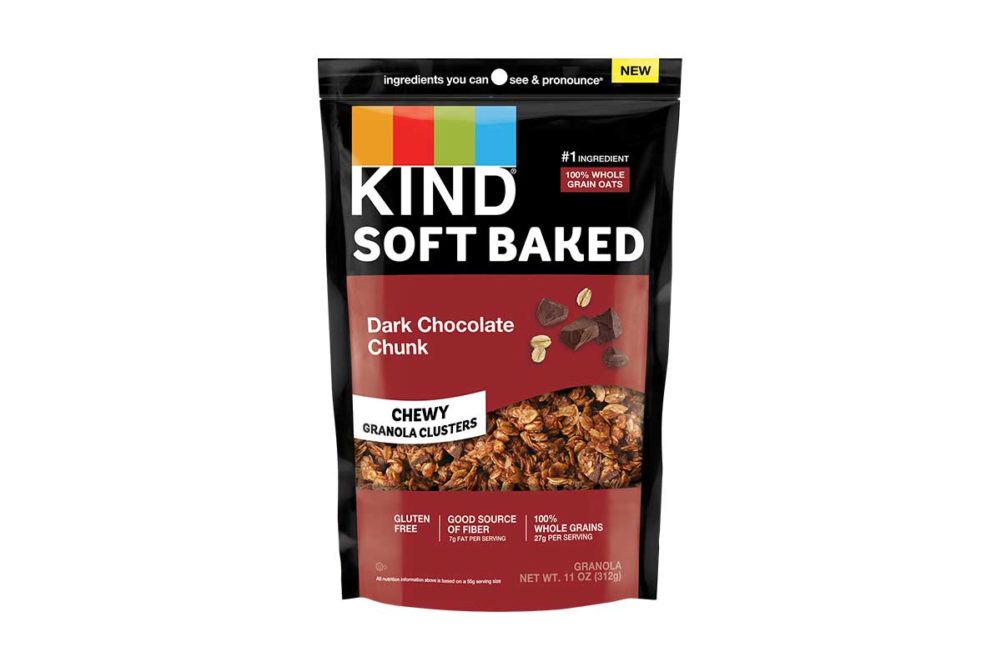The list of fiber-rich ingredients continues to grow as scientists identify new sources and technologies for extraction. Many of the newest offerings assist bakers in their sustainability claims, as new fiber ingredients are upcycled from food manufacturing side streams.
“With the introduction of new fiber ingredients, we’re enabling new opportunities for baked goods formulation and fiber fortification,” said Alina Slotnik, vice president, bioactives, Brightseed.
Brightseed, for example, used artificial intelligence technology to identify two bioactive compounds in hemp fiber.
“Bioactives are compounds that promote growth found in plants, fungi and microbes and are the unsung heroes of our health, meaning that they’re pushing the boundaries for how we can live better,” Ms. Slotnik said. “Emerging research demonstrates that these bioactives show promise with supporting gut strength and gut lining to maintain healthy gut barrier function. It’s also an upcycled ingredient, giving formulators yet another unique edge that they can use in their formulation.”
FutureCeuticals now offers a functional ingredient that contains 50% soluble and insoluble dietary fiber from upcycled apples, carrots, blueberries, cranberries and spinach. The ingredient delivers plant-based, intact dietary fiber and polyphenols to the gut. The fiber-bound polyphenols, once inside the gut, are released slowly and act as antioxidants to promote gut health.
Fruit juice processing contributes many side streams that may be upcycled into a variety of ingredients, such as pectin. Pectin is an FDA-recognized isolated fiber ingredient that performs varied functions in baked goods.
“Pectin is made from the byproducts of juice production, citrus peels and apple pomace,” said Christine Addington, principal technical account manager, dairy, Cargill. “Rather than discard these leftovers, Cargill relies on them to produce pectin, a time-tested ingredient known for its thickening, gelling and protein stabilization properties.”
Citrus fiber ingredients have also long relied on these fruit juice processing waste streams. Ingredion Inc. has entered this space with what some might call a “double upcycled” ingredient as the company uses the waste streams from the pectin industry. Ingredion’s new citrus fibers provide unique textures and sensory experiences. Citrus fibers also can extend shelf life and stability in numerous applications, including conventional and gluten-free baked foods and snacks. They can also control moisture and bind fat in various applications.
Not-from-concentrate juice manufacturer FruitSmart Inc. now offers a range of upcycled fruit fibers, powders and oils produced from its own juicing side streams.
“Once the juice has been captured, we take the remaining pomace (the skins, pulp and seeds), dry it and then mill it,” said Wayne Lutomski, president. “That pomace would go to a landfill or for animal feed previously. Now, it is used for human consumption in a beneficial way.”
Nourish IFF’s real fruit inclusions provide increased fiber with less sugar.
“Fruit is known to be an excellent source of fiber,” said Catherine Hogan, bakery marketing lead, Nourish IFF. “Our real fruit inclusions allow bakery manufacturers to create products that deliver more than 20 grams of fiber per 100 gram serving with 15% less sugar than our standard inclusions without compromising taste or texture.”
The Supplant Co. is all about producing healthier, more sustainable ingredients from the “forgotten half of the harvest,” referring to underutilized agricultural side streams, such as corn cobs, oat hulls and wheat straw.
As the name suggests, the company’s new “grain and stalk flour” is made from both the grain and stalk of the wheat plant with the latter usually going to ruminant animal feed. In baked goods, pasta and other flour-based products, the flour maintains texture and taste while offering fewer calories and more than six times the fiber of regular wheat flour.
With so many fiber options available to bakers, the industry is well-positioned to help bridge the gap of fiber deficiency in the American diet.
“People are going to continue to add more fiber because it’s getting easier, because the ingredients are getting better,” Ms. DesRocher said. “The formulation challenges are being addressed through the creation and synthesis of new fibers. You can create products that previously you would never have thought were compatible with a high-fiber format. And, as they taste better, consumers are more receptive to them.”
This article is an excerpt from the May 2023 issue of Baking & Snack. To read the entire feature on Fiber, click here.





